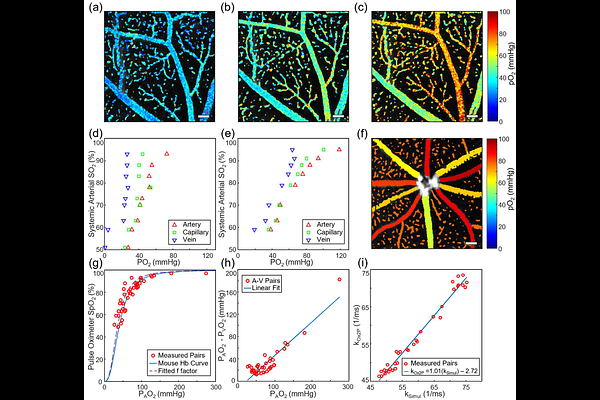Multimodal retinal imaging by visible light optical coherence tomography and phosphorescence lifetime ophthalmoscopy in the mouse eye

Multimodal retinal imaging by visible light optical coherence tomography and phosphorescence lifetime ophthalmoscopy in the mouse eye
Nolen, S. L.; Li, Z.; Wang, J.; El Khatib, M.; Vinogradov, S. A.; Yi, J.
AbstractSignificance: Oxygen metabolism is important to retinal disease development, but current imaging methods face challenges in resolution, throughput, and depth sectioning to spatially map microvascular oxygen. Aim: To develop a multimodal system capable of simultaneous phosphorescence lifetime imaging scanning laser ophthalmoscopy (PLIM-SLO) and visible light optical coherence tomography (VIS-OCT) to capture capillary-level oxygen partial pressure (pO2) and structural volumes in rodents. Approach: C57BL/6 mice were imaged by VIS-OCT with high-definition (10 kHz raster) and Doppler (100 kHz circular) protocols. Phosphorescent probe Oxyphor 2P was retro-orbitally injected to enable intravascular PLIM-SLO imaging (200 s pixel dwell time), while a tunable lens was used to adjust the focal depth. The extracted phosphorescence lifetimes were used for pO2 calculation. Simultaneous imaging utilized a shared imaging path and synchronized data collection. Results: VIS-OCT images revealed detailed anatomy and Doppler shifts, while PLIM-SLO provided capillary pO2 at multiple depths. A hemoglobin oxygen dissociation curve related retinal arterial pO2 to systemic oxygen saturation as inhaled oxygen was varied. Registered simultaneous images were captured and pO2 was empirically adjusted for the combined excitation. Conclusions: Detailed anatomical structures and capillary pO2 levels can be simultaneously imaged, providing a useful tool to study oxygen metabolism in rodent disease models.